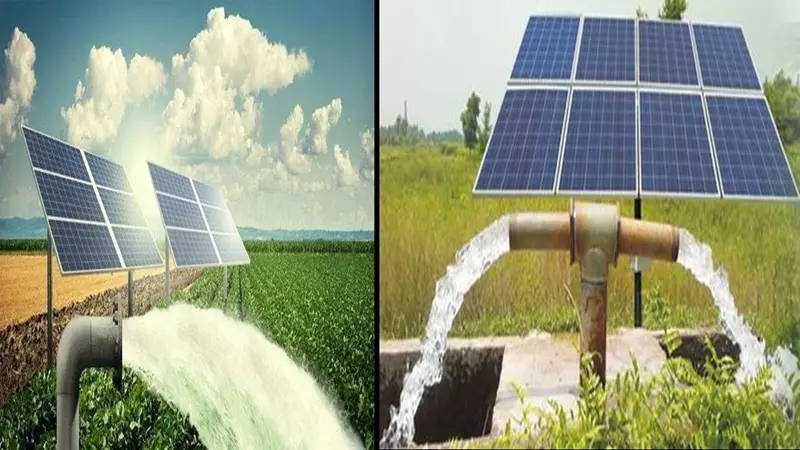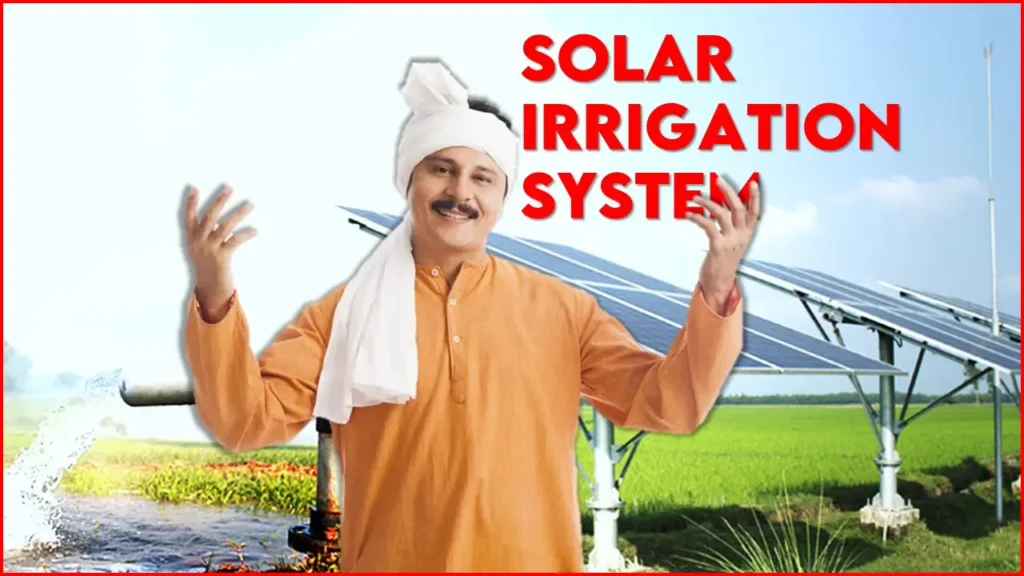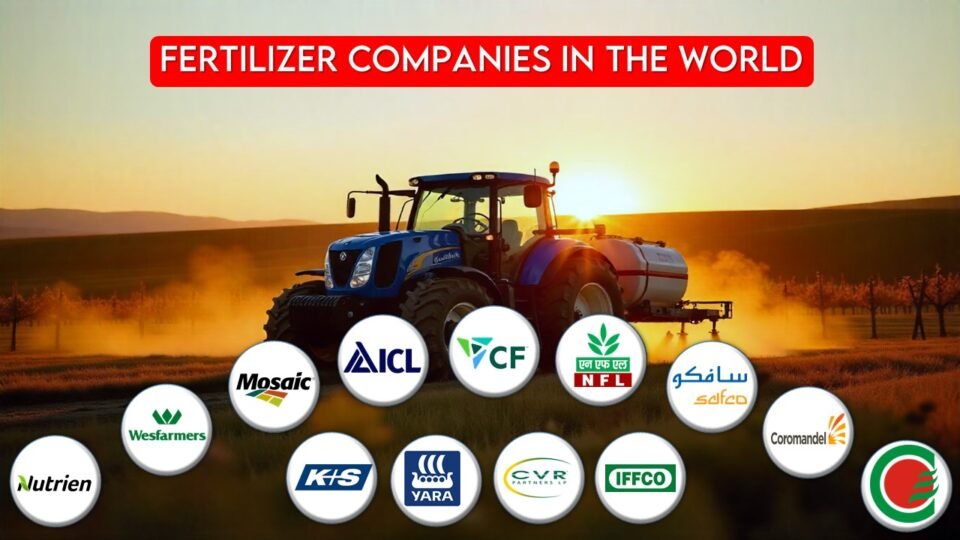What happens when you try to bring agricultural produce without water? Think of it from the farmers’ perspective. After independence, they were forced to produce crops with insufficient amounts of water because the cost of securing water for their field far exceeded the value of their overall production. Undoubtedly, this method failed. Even today, water unavailability has been the major reason for crop failure in many parts of the country. Which results in huge economic losses and badly risks the farmers’ livelihood.
To resolve the crisis, the government of India introduced the Solar Irrigation System in 1993. Solar Irrigation or Solar water Pumps were a cheaper and ecologically healthier option for the farmers. But wait, is it enough as per our increasing demands? To know the answer let us dive into the data, our demands, and the potential of the Solar Irrigation System.
In this article, you will get to know the significance of the solar irrigation system, its operational mechanics, implementation strategies, associated schemes and subsidies, pros and cons, future aspects and the areas of improvement.
History of Solar Irrigation System in India
Globally, 40 per cent of Food Production accounts from irrigated croplands. And when we talk about India, about 700 m ha of land (37%), out of a total of 195 m ha cultivated land is dependent on irrigation, and 60 per cent of it comes from groundwater. This percentage is increasing at an increasing rate each year. We will discuss the reasons later in the article. It shows the heavy dependency on proper irrigation systems and pump facilities in overall agriculture. In such cases, proper energy consumption becomes even more challenging in regions where electricity is scarce or unreliable. First, let us know how this system spread its wings in the country.
To reduce the dependency of the irrigation system on polluting fuels or dies, the Ministry of New and Renewable Energy(MNRE) introduced the Solar Irrigation System in 1993. This method was a sustainable choice and economically strengthening.
However, during its early phases, we observed only a small adoption rate among farmers due to its high establishment cost and low awareness. However, the low maintenance cost and high output generation by this system were undeniable.
Another such step was taken with the Jawaharlal Nehru National Solar Mission (JNNSM), which was launched in the year 2010. The mission was aimed to increase solar energy production across the country. Many subsidies and incentives were also offered under the mission to make these solar irrigation systems affordable to the farmers.
PM-KUSUM
There is one scheme that needs a mandatory discussion. PM-KUSUM (Pradhan Mantri Kisan Urja Suraksha Evam Utthaan Mahabhiyan), was launched in the year 2019. More than 300,000 farmers have already benefited from it. In addition to this, timely interventions are going under the scheme every year.
It aims to install two million standalone solar pumps by 2025 with an outlay of Rs. 340 Billion. Under this initiative, the government shall provide subsidies installation of solar water pumps for both grid-connected and off-grid-connected areas.
The scheme is divided into three key components:
Component A: To Establish 10,000 MW of decentralised, ground-mounted or stilt-mounted grid-connected solar power plants on completely barren lands or in cultivated land where the height of crops will always remain below the solar panels. To reduce the transmission losses the power project will be developed within the five km radius of the sub-stations. The power capacity shall always remain between 500 kW to 2 MW, which could be set up by individual farmers, groups, communities, panchayats, FPOs, etc.
Component B: To Install 1.75 million stand-alone solar-powered irrigation pumps. The government will provide financial assistance for the pumps that have a power of around 7.5HP. These pumps shall replace the traditional pumps in off-grid areas where the on-grid facility is unavailable.
Component C: Solarize 1 million grid-connected irrigation pumps. It also aims to generate additional income by selling surplus electricity to DISCOM at fixed prices, generated through the solar panels back to the grid. This not only improves irrigation systems but also empowers farmers’ economies.
There are many other state-level schemes, currently running under the government, for a similar cause. Many people have already benefited from such schemes.
Why Solar Irrigation System?
First of all, the conventional system did not have enough capacity to take the burden of irrigation requirements of modern Agriculture, the country needed a new approach, a new technology. With fewer resources available and the matter of sustainability in hand, Solar power was the best option we all could turn to.
- It is a renewable source of energy with no release of intoxicants into the environment and contributes a big hand towards environmental safety and sustainability.
- In many of the villages and hilly areas in India, power cut is still a recognisable problem, so relying on electricity supply for irrigation is concerning. Here, solar power becomes an ultimate source to keep running the supplies. As it operates without electricity grids, which means there will be a continuous supply of energy for irrigation.
- We are aware of the fact that solar panels have a life of 25 years, which means, you need not worry about costs occurring after installation. There is no such Economically feasible option as this one.
- Solar Irrigation allows minimum wastage of water and integration with other technologies like sprinkler systems and micro-irrigation systems can reduce water losses by up to 90 per cent.
- Unlike traditional diesel or electric pumps, solar-powered water pumps rely on renewable energy from the sun, eliminating the recurring costs of fuel and electricity. Once installed, the system runs autonomously with minimal manual intervention. Which means it allows low operational and maintenance costs.
Also Read
Components of Solar Irrigation System
Here we have enlisted some basic components only, you may also add other advanced components for better performance and as per the requirement of that area.
Solar Panels
These panels should be installed in open areas with good sunlight hours. It converts solar energy into electrical energy through photovoltaic cells for power generation.
Water Pump
It draws water from the main sources it will be set up with, like wells, rivers, or boreholes. There are mainly two types of solar water pumps based on the depth of the water resources:
- surface pumps for shallow water sources, and
- submersible pumps for deep water extraction.
Pump Controller
It regulates the power flow between the panels and the water pump which is necessary for a continuous power source to draw water continuously.
VFD(Variable Frequency Drive)
It is there to regulate the speed and motional directions of the irrigation pump. This ensures optimal performance and allows the pump to function efficiently even under cloudy days. The VFD also plays a major role in maintaining consistent water flow.
Mounting Structure
It holds the whole structure at an optimal angle to maximise energy production.
Inverter
An inverter converts the direct current produced by the solar panels into alternating current. Which can then be directly used for operating any electric machine.
Pipes and Valves
These components help distribute water from the pump to the fields for efficient irrigation.

Types of Solar Irrigation Systems
There are several types of solar irrigation systems, each designed for different agricultural needs and sources of water:
Stand-Alone Solar Water Pumps
These systems rely solely on solar panels to provide power to the pump. They are ideal for remote areas with electricity shortages.
Hybrid Solar Irrigation Systems
These kinds of systems are meant for areas with insufficient sunlight to run the solar system alone. It is an integrated form of modern solar irrigation system and the conventional system.
The farmer can switch to the conventional source whenever needed.
Grid-Connected Solar Irrigation Systems
It is also used in areas of insufficient sunlight. But unlike Hybrid systems, the two systems are not integrated but function independently. So farmers use the source according to their preference. So, both the systems run sideways.
Drip Solar Irrigation Systems
To minimise the water losses the integration between the solar system and drip irrigation system was done to allow the direct supply of water to the plant roots through a network of drippers. This method conserves water up to 80% with an efficiency of 90-95%.
Solar Floating Pumps
These systems are useful where land for solar panel installation is limited. It also reduces the evaporation rate of water bodies.
Each type of solar irrigation system has its specific applications which depend upon:
- Water availability
- Depth of water sources
- And the scale of farming operations.
How to Select the Right Pump?
Selecting the right pump and other components for a solar irrigation system is crucial for ensuring efficient water management and better energy consumption. Here are the important factors to consider while choosing a pump:
Water Source and Depth
The water sources shouldn’t be at a far distance, otherwise, a lot of energy transmission losses will occur and the cost of power generation will also increase.
Choose the ideal pump as per the depth of your water sources.
- Surface Pump: It is ideal for water resources like ponds, rivers, or tanks, that have a water depth only of up to 20 feet.
- Submersible Pump: It is needed for deep water resources like wells that have a depth above twenty feet.
Flow Rate Requirements
To determine the energy requirements and workload, It is important to determine the volume of water needed for irrigation which is measured in (l/s) or (m³/h).
Head Height
‘The head’ is the vertical distance that the pump needs to lift the water. This includes:
- Static Head: It is the vertical distance between the water source and the highest point of irrigation.
- Friction Head: it is the loss in height due to resistance in pipes, bends, or valves.
NOTE: A higher total head requires a more powerful pump.
Solar Panel Capacity
For the efficient operation of pumps, the power output of the solar panels must meet that of the pump wattage needs.
Pump Efficiency
A high-efficiency pump should be used to minimise energy losses and you may ensure that the maximum amount of solar power is being used for irrigation. The High-efficiency pumps reduce operational costs.
Water Demand and Irrigation Type
Consider the type of irrigation system based on water availability:
- Drip Irrigation:It requires pumps with moderate flow rates and low pressure.
- Flood Irrigation: This requires higher flow rates and pressure, demanding a more powerful pump.
Durability and Maintenance
Adopt the pumps that are made up of non-corrosive material, especially for systems that will be frequently exposed to external environments. Look for pumps that are easy to maintain with easily available spare parts.
Budget and Subsidies
Before establishing the system that you find to be perfect for your fields, make sure it fits within your budget. The budget will be made up of the subsidies provided by the government and the money provided from your wallet. Make sure to at least touch the break-even analysis point with this system.
Also Read
Cost Estimation to Establish a Solar Irrigation System in India
Here’s a simplified balance sheet for establishing a solar irrigation system. But obviously, the cost depends on many factors like the size of the system, Brand and Quality, subsidies, panel type, pump type, location, etc.
This is a snapshot of the estimated costs involved that will help you get a broader view of all the expenses involved during the establishment.
Here the costs include:
- Solar Panels: Costs are based on the capacity and panel quality.
- Solar Water Pump: Cost varies with type (surface vs. submersible) and capacity.
- Pump Controller/VFD: It is essential for regulating pump operations.
- Mounting Structure: Required for panel installation at the right height.
- Inverter: Necessary if using an AC pump.
- Water Storage Tank: Optional but useful for consistent water supply.
- Pipes and Valves: For water distribution.
- Installation and Labor: Includes setup and initial arrangements.
- Miscellaneous Costs: Covers additional small components and recovery.
- Maintenance and Operations: Ongoing annual costs for sustenance.
ASSETS:
| S. No. | Item | Estimated Cost (Rs.) |
| 1 | Solar Panels | 30,000 – 50,000 per kW |
| 2 | Water Pump | 50,000 – 2,50,000 |
| 3 | VFD and Pump Controller | 20,000 – 50,000 |
| 4 | Mounting Structure | 15,000 – 30,000 |
| 5 | Inverter(Optional) | 20,000 – 40,000 |
| 6 | Water Storage Tank (Optional | 10,000 – 50,000 |
| 7 | Pipes and Valves | 10,000 – 30,000 |
| 8 | Installation and Labor | 20,000 – 50,000 |
| 9 | Miscellaneous Costs | 10,000 – 20,000 |
| 10 | Maintenance and Operations (Annual) | 5,000 – 10,000 |
Total Estimated Initial Cost:
- Small to Medium Systems: ₹2,00,000 – ₹5,00,000
- Large Systems: ₹5,00,000 – ₹10,00,000
NOTE:
| Properties | Small | Medium | Large |
| Irrigated Area | Less than or equal to 2 hectares | 2-10 hectares | More than 10 hectares |
| Water Pump Capacity | 2,000 litres/day or 1-2 HP | 2,000-10,000 litres/day or 2-10HP | 10,000 litres/day |
| Solar Power | 0.5kW-1kW | 1kW-5kW | More than or equal to 5kW |
| Uses | Home gardens, small farmholders. | Medium Sized Farms | Commercial or large-scale Farms |
*Differences between Small, Medium and Large Systems.
Bottlenecks of Solar Irrigation Systems in India
- Due to High Establishment Costs, the initial investment is still challenging for small and marginal farmers despite subsidies provided by the government.
- Getting a loan itself is a task. Subsidies are not enough to establish a full-functioning solar irrigation system
- Even though we are aware of all the advantages possessed by this system, it is still new to many farmers in the country, which leads to its less adoption.
- Limited grid connectivity in rural areas restricts the integration of modern Irrigation systems with the grid.
- These systems and pumps are supposed to be left in the field unguarded. There is a high risk of theft in such a case. Some extra measures have to be taken by the farmers to protect the system.
- The main reason for water scarcity is not water unavailability but water exploitation. Climate Change is another problem leading to less Rainfall and forcing farmers to use groundwater. Solar Irrigation Systems will only end up as a medium of exploitation if we don’t find the solutions to the real problems.
Also Read
- Modern Tools Used in Agriculture to Protect Crop from Damage
- Top 10 Modern Agricultural Tools
- Jugadu Kamlesh innovative Ideas to help Farmers
Future Aspects
Although the government has made technologies available in the market, these are not yet widely adopted due to a lack of technical training and knowledge among farmers. But as we are heading towards adopting new technologies and more scientific ways of agriculture, it is just a matter of time before the adoption of the Solar Irrigation system will increase up to one hundred per cent. With already more than three lakh farmers benefiting from it is sufficient for the clarification of the data.
There are institutes like the International Water Management Institute (IWMI) and CGIAR, that are continuously developing and encouraging solar irrigation systems in India. After all, there is nothing to reject the thought of having this technology in your field. The contribution of the government and such institutions has surely gained popularity over the years.
Raj Kumar Singh, the former Union Minister for Power and New and Renewable Energy also reported in February 2024 in the Lok Sabha that over 295,000 standalone off-grid solar water pumps have already been established in India under the component-B of PM-KUSUM. With these increasing numbers over the years, It can be said that the Solar Irrigation system is the future of Indian Agriculture.
Latest Post
- November Issue 2025- Times of Agriculture Magazine
- Punjab & Sind Bank Introduces Special Program to Support Food and Agro-Processing Sector
- Beyond Classrooms and Gardens: How a Professor Turned His Passion into Purpose
- October Issue 2025- Times of Agriculture Magazine
- Top 10 Pesticide Companies in the World
- September Issue 2025- Times of Agriculture Magazine
- Top 15 Fertilizer Companies in the World
- Top 10 Vegetable Farming Profit Per Acre in India
- August 2025 : Times of Agriculture Magazine (AgriVoltaics Farming)
- Button Mushroom Farming: Infrastructure, Cultivation, and Profitability
- Sahiwal Cow: Characteristics, Milk per Day, Price and Origin
- July 2025 : Times of Agriculture Magazine














